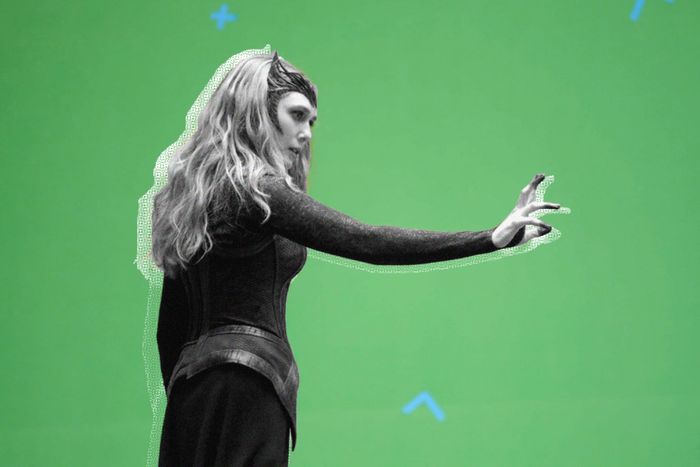
It’s pretty well known and even darkly joked about across all the visual-effects houses that working on Marvel shows is really hard. When I worked on one movie, it was almost six months of overtime every day. I was working seven days a week, averaging 64 hours a week on a good week. Marvel genuinely works you really hard. I’ve had co-workers sit next to me, break down, and start crying. I’ve had people having anxiety attacks on the phone.
The studio has a lot of power over the effects houses, just because it has so many blockbuster movies coming out one after the other. If you upset Marvel in any way, there’s a very high chance you’re not going to get those projects in the future. So the effects houses are trying to bend over backward to keep Marvel happy.
To get work, the houses bid on a project; they are all trying to come in right under one another’s bids. With Marvel, the bids will typically come in quite a bit under, and Marvel is happy with that relationship, because it saves it money. But what ends up happening is that all Marvel projects tend to be understaffed. Where I would usually have a team of ten VFX artists on a non-Marvel movie, on one Marvel movie, I got two including myself. So every person is doing more work than they need to.
The other thing with Marvel is it’s famous for asking for lots of changes throughout the process. So you’re already overworked, but then Marvel’s asking for regular changes way in excess of what any other client does. And some of those changes are really major. Maybe a month or two before a movie comes out, Marvel will have us change the entire third act. It has really tight turnaround times. So yeah, it’s just not a great situation all around. One visual-effects house could not finish the number of shots and reshoots Marvel was asking for in time, so Marvel had to give my studio the work. Ever since, that house has effectively been blacklisted from getting Marvel work.
Part of the problem comes from the MCU itself — just the sheer number of movies it has. It sets dates, and it’s very inflexible on those dates; yet it’s quite willing to do reshoots and big changes very close to the dates without shifting them up or down. This is not a new dynamic.
I remember going to a presentation by one of the other VFX houses about an early MCU movie, and people were talking about how they were getting “pixel-fucked.” That’s a term we use in the industry when the client will nitpick over every little pixel. Even if you never notice it. A client might say, “This is not exactly what I want,” and you keep working at it. But they have no idea what they want. So they’ll be like, “Can you just try this? Can you just try that?” They’ll want you to change an entire setting, an entire environment, pretty late in a movie.
The main problem is most of Marvel’s directors aren’t familiar with working with visual effects. A lot of them have just done little indies at the Sundance Film Festival and have never worked with VFX. They don’t know how to visualize something that’s not there yet, that’s not on set with them. So Marvel often starts asking for what we call “final renders.” As we’re working through a movie, we’ll send work-in-progress images that are not pretty but show where we’re at. Marvel often asks for them to be delivered at a much higher quality very early on, and that takes a lot of time. Marvel does that because its directors don’t know how to look at the rough images early on and make judgment calls. But that is the way the industry has to work. You can’t show something super pretty when the basics are still being fleshed out.
The other issue is, when we’re in postproduction, we don’t have a director of photography involved. So we’re coming up with the shots a lot of the time. It causes a lot of incongruity. A good example of what happens in these scenarios is the battle scene at the end of Black Panther. The physics are completely off. Suddenly, the characters are jumping around, doing all these crazy moves like action figures in space. Suddenly, the camera is doing these motions that haven’t happened in the rest of the movie. It all looks a bit cartoony. It has broken the visual language of the film.
Things need to change on two ends of the spectrum. Marvel needs to train its directors on working with visual effects and have a better vision out of the gate. The studio needs to hold its directors’ feet to the fire more to commit to what they want. The other thing is unionization. There is a growing movement to do that, because it would help make sure that the VFX houses can’t take bids without having to consider what the impacts would be. Because a lot of the time, it’s like, you get to work on a Marvel show, and you’ll work on that for cheaper just because it’s cool.
Some of the problems I mentioned are universal to every show and every project. But you end up doing less overtime on other shows. You end up being able to push back more on the directors. When they say something like, “Hey, I want this,” you can be like, “This doesn’t make sense.” Not every client has the bullying power of Marvel.
Have a story to share about working as a VFX artist? Let us know at [email protected].


